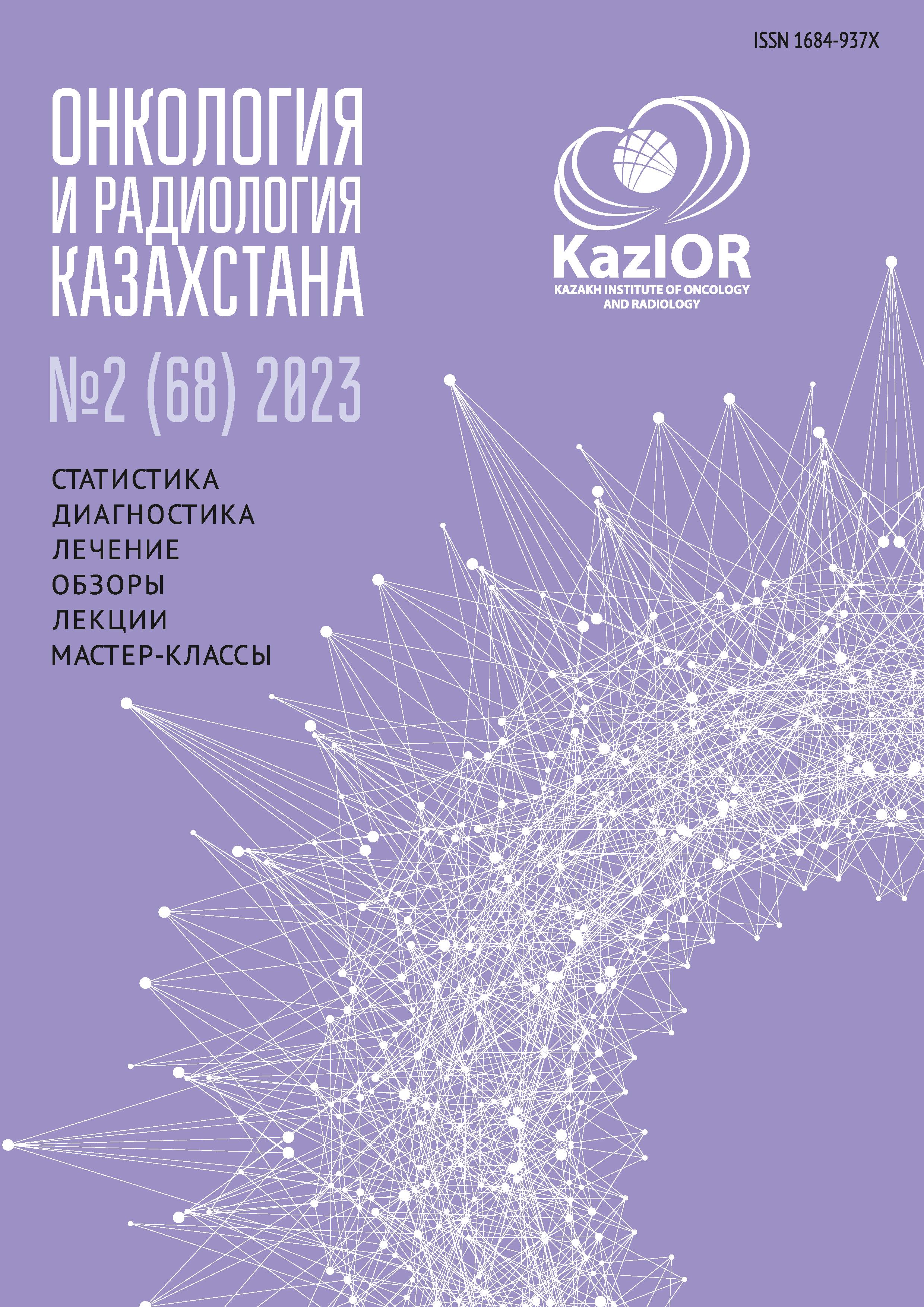The role of clinical-hematological and cytogenetic characteristics in the program therapy of b-cell leukemia in children in the Republic of Kazakhstan
Keywords:
children, acute B-cell lymphoblastic leukemia, blast cells, immunophenotyping, cytogenetic studyAbstract
Relevance: The study of immunological and molecular genetic characteristics of leukemia in children and the influence of biological features
of the tumor population of acute B-cell lymphoblastic leukemia (B-ALL) on the effectiveness of therapy is particularly relevant for the Republic of Kazakhstan.
The study aimed to evaluate the effectiveness of modern program chemotherapy in children depending on the biological characteristics of
B-cell leukemias.
Methods: The study analyzed the data of 154 children aged six months to 15 years with primary B-ALL on inpatient treatment at the Scientific
Center of Pediatrics and Pediatric Surgery JSC (Almaty, the Republic of Kazakhstan) in 2016-2018. When determining events, we were guided by
the criteria of the protocols of the ALL-BFM group.
Results: The age groups most exposed to B-ALL were 3-7 years old (43.5%), reflecting the so-called infant peak. In the clinical picture of this type of ALL, intoxication syndrome accompanying the period of manifestation was present in 75.3% of patients. The clinical polymorphism of the debut period determined the most diverse list of diagnoses of “masks.” Damage to organs and systems, in the form of liver failure, was detected in 41 (26.6%) children, with the development of respiratory failure in 12 (7.8%), cardiovascular failure in 5 patients (3.2%), acute kidney injury in 3 (1.9%), CNS damage in 5 (3.2%) patients. With B-ALL, the distribution of immunological variants was determined as follows: B1 – 9 (5.8%), B2 – 123 (79.8%), B3 – 18 (11,7%), B4 – 4 (2,6%) and leukemia of B-cell lymphoma was noted in one (0.6%) patient. From the group of quantitative anomalies, hyperploidy was detected in 12 (7.8%) cases. Among qualitative anomalies, t(12;21) (p13;q22) was determined in 6 (3.9%) patients and was a favorable prognostic factor (remission was recorded). Trisomy of chromosome 21 with Down syndrome in 3 (1.9%) patients with combined anomalies (isochromosome 7, trisomy 4, 6, 15, 17, translocation t(9; 22)(q34;q11) was detected in 1.3%. Translocations t(1;19)(q23;p13.3) in 5.8% and del 9-chromosome defect in 3.2% of cases.
Conclusion: The response to therapy and long-term prognosis are largely determined by biological factors such as cytogenetic features
of the tumor, sensitivity to prednisone, as well as the degree of aggressiveness, which manifests itself in the form of pronounced symptoms of
lymphoproliferation and hyperleukocytosis. The research has shown the high efficiency of modern ALL-BFM program therapy in children.

